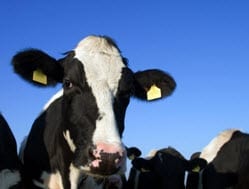Farmers to obtain additional help this year due to severe drought.
Tom Vilsack, the Agriculture Secretary, has announced a number of efforts that are being made in order to help farmers who have been impacted by the worst drought that has been seen in 50 years, including alterations to the  livestock insurance program.
livestock insurance program.
The U.S. Department of Agriculture (USDA) will modify its emergency loans.
This will allow loans to be made earlier on in the season in order to allow producers to purchase livestock insurance, as well as to offset the higher cost of feed and to assist those who have had to liquidate their herds.
These changes will also involve new special provisions to the livestock insurance program.
This program will help to cover grazing or haying of cover crops without causing harm to the ability to obtain coverage for the crops that are planted in the spring of 2013. This effort should help to provide a significant level of livestock insurance for feed and forage this autumn and winter for producers.
According to Vilsack, “At the direction of the President, USDA continues to work as swiftly as possible to get help to America’s farmers and ranchers by providing flexibility within existing programs, particularly those that assist livestock producers.” He went on to explain that the Obama administration intends to use the upcoming weeks to continue to support and strengthen ranchers, farmers, and other related businesses as the drought recovery continues.
Still, Vilsack believes that it remains vital that a Food, Farm and Jobs Bill be passed by Congress as soon as it can, in order to equip the USDA with the tools that it needs in order to provide greater support for producers at times of struggle such as these. This is not the only insurance news that has been made over the summer in this regard.
Crop and livestock insurance have been a significant topic of debate over the last few weeks and months due to unfavorable weather conditions. Over the past six weeks, there have been 1,692 counties designated as disaster areas as a result of the drought.
